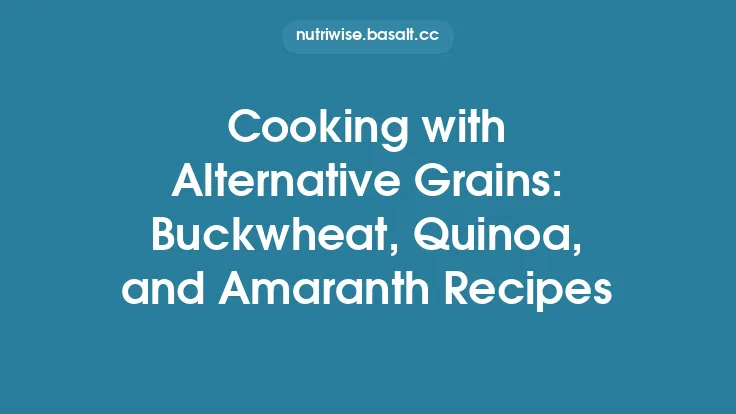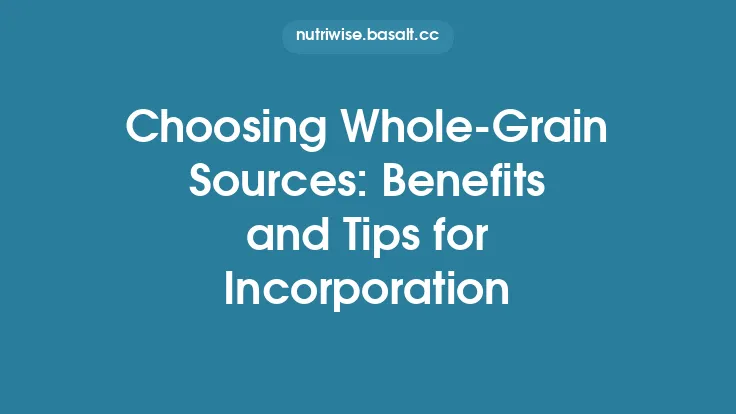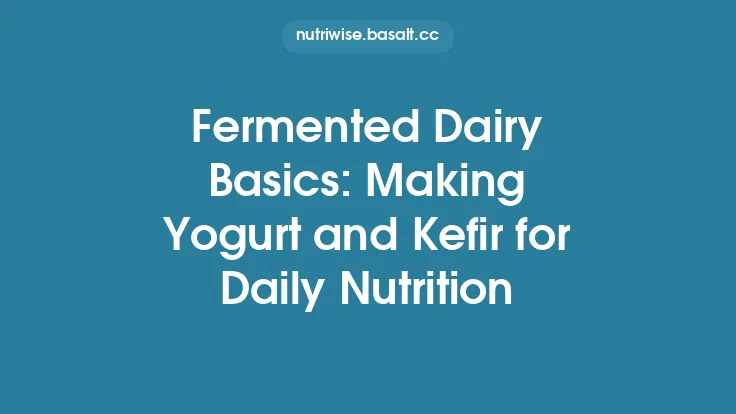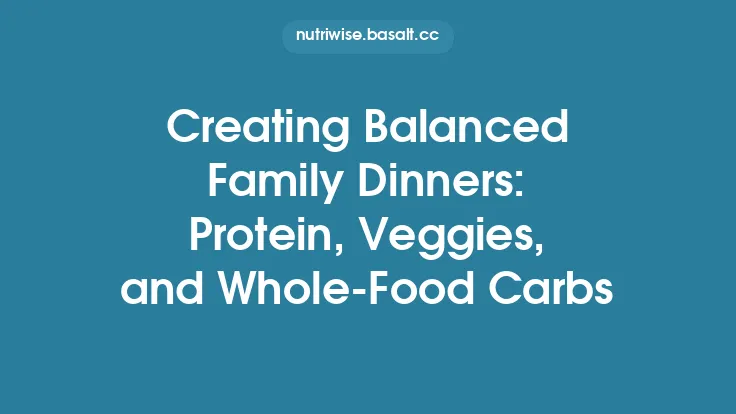Gluten‑free baking often feels like navigating a culinary minefield: the familiar elasticity of wheat dough is gone, and the resulting loaves can turn out dense, crumbly, or bland if the right techniques aren’t applied. Yet, with a solid grasp of the science behind structure and flavor, and by choosing the right alternative grains, you can create baked goods that rival their gluten‑containing counterparts in both texture and taste. Below is a comprehensive guide that walks you through the fundamentals, from the role of gluten to the nuanced handling of grain blends, hydration, and baking parameters.
Understanding Gluten’s Role in Traditional Baking
Gluten is a network of two proteins—gliadin and glutenin—that, when hydrated and kneaded, form an elastic matrix. This matrix performs three critical functions:
- Structure – It traps gas bubbles produced by leavening agents, allowing the dough to rise and retain its shape.
- Texture – The elasticity gives bread its chewiness and crumb resilience.
- Moisture Retention – Gluten holds water, keeping baked goods from drying out quickly.
When gluten is absent, the baker must replace each of these functions with alternative ingredients and techniques. Recognizing what gluten does helps you deliberately substitute its structural, textural, and moisture‑holding properties.
Key Characteristics of Gluten‑Free Grains
Not all gluten‑free grains behave the same way in a batter or dough. Their suitability for baking hinges on three primary attributes:
| Grain / Pseudocereal | Starch Type | Protein Content | Typical Flavor Profile | Ideal Uses |
|---|---|---|---|---|
| Rice (white & brown) | Predominantly amylopectin (white) and a mix of amylose/amylopectin (brown) | Low (6‑8 %) | Mild, neutral | Base flour for cakes, cookies, and quick breads |
| Sorghum | High amylopectin, moderate amylose | Moderate (10‑12 %) | Slightly sweet, nutty | Adds body to breads and muffins |
| Millet | Balanced amylose/amylopectin | Moderate (8‑12 %) | Light, buttery | Good for pancakes and crumbly pastries |
| Teff | High amylose | Moderate (13‑14 %) | Earthy, slightly sweet | Works well in dense loaves and flatbreads |
| Amaranth | High amylose | High (14‑16 %) | Nutty, earthy | Provides protein boost in breads and crackers |
| Quinoa | Balanced amylose/amylopectin | High (14‑16 %) | Mildly nutty | Adds structure to muffins and scones |
| Buckwheat (pseudocereal) | High amylose | Moderate (13 %) | Robust, earthy | Excellent for pancakes, crepes, and rustic breads |
*Starch type matters*: Amylose tends to form firmer gels, contributing to crumb firmness, while amylopectin yields softer, more tender textures. By mixing grains with complementary starch profiles, you can fine‑tune the final crumb.
Building Structure Without Gluten: Starches, Proteins, and Hydrocolloids
Since gluten is unavailable, you must assemble a “synthetic” network using three pillars:
- Starch Gelatinization – When heated with water (typically 60‑70 °C), starch granules swell and burst, forming a gel that traps moisture and gas. High‑amylose starches (e.g., teff, amaranth) create firmer gels, while high‑amylopectin starches (e.g., white rice) yield softer gels.
- Protein Coagulation – Gluten‑free grains still contain proteins (e.g., amaranth, quinoa). Upon heating, these proteins denature and coagulate, contributing to crumb structure. While not as elastic as gluten, they add firmness and a subtle chew.
- Hydrocolloids & Gums – Ingredients such as xanthan gum, guar gum, psyllium husk, and methylcellulose act as “glue,” binding water and providing elasticity. They mimic gluten’s ability to stretch and hold gas. The typical usage rates are:
- Xanthan gum: 0.5‑1 % of total flour weight
- Guar gum: 0.5‑1 %
- Psyllium husk powder: 2‑4 % (excellent for bread crumb elasticity)
- Methylcellulose: 1‑2 % (creates a gel that sets during baking, ideal for crusty loaves)
When combined, these three components create a cohesive matrix that can support leavening, retain moisture, and deliver a pleasing mouthfeel.
Selecting and Combining Alternative Grain Flours
A single grain flour rarely provides all the functional attributes needed for a balanced bake. The art lies in blending flours to achieve the desired protein‑starch‑flavor balance.
1. Establish a Base
Start with a neutral, low‑protein flour such as white rice flour (≈7 % protein). It offers a light texture and does not dominate flavor.
2. Add Structure Builders
Incorporate 20‑30 % of a higher‑protein, higher‑amylose flour (e.g., sorghum, teff, or amaranth) to increase crumb firmness and protein content.
3. Introduce Flavor Enhancers
A small proportion (10‑15 %) of a distinctly flavored flour—buckwheat, millet, or quinoa—adds depth without overwhelming the palate.
4. Balance Moisture Retention
If the blend feels dry, add a modest amount (5‑10 %) of a higher‑amylopectin flour like brown rice or tapioca starch to improve moisture absorption.
5. Example Blend for a Versatile All‑Purpose Gluten‑Free Flour
| Ingredient | Percentage of Total Flour |
|---|---|
| White rice flour | 45 % |
| Sorghum flour | 20 % |
| Teff flour | 15 % |
| Buckwheat flour | 10 % |
| Tapioca starch | 10 % |
Adjust the ratios based on the target product: increase sorghum/teff for bread, boost buckwheat for pancakes, or raise tapioca for crisp cookies.
Hydration and Mixing Techniques for Gluten‑Free Doughs
Gluten‑free batters often require higher hydration than wheat doughs because the starches need sufficient water to gelatinize fully. General guidelines:
- Bread‑type doughs: 100‑130 % hydration (water weight relative to flour weight).
- Cake‑type batters: 120‑150 % hydration, often achieved with a combination of liquid (milk, water) and oil.
- Cookie doughs: 70‑90 % hydration, allowing for a firmer, spread‑controlled texture.
Mixing Order
- Combine dry ingredients (flours, starches, gums, leaveners, salt).
- Whisk wet ingredients (liquids, eggs, dairy, flavorings) separately.
- Gradually incorporate wet into dry, stirring until a uniform batter forms.
- Rest the batter for 10‑30 minutes. This “autolyse” period lets starches fully hydrate, improving gel formation and reducing gritty texture.
Mixing Tools
- Stand mixer with paddle attachment: Ideal for bread doughs, ensuring even distribution of gums and preventing over‑mixing.
- Hand whisk or electric hand mixer: Sufficient for cakes and quick breads.
- Spatula: For delicate batters where minimal aeration is desired.
Avoid excessive mixing, which can break down the hydrocolloid network and lead to a gummy crumb.
Temperature Control and Baking Times
Gluten‑free baked goods are more sensitive to temperature fluctuations because the starch‑gel network sets at a narrower temperature window.
- Oven Preheat: Always preheat to the exact temperature indicated (usually 350‑425 °F).
- Steam: For crusty breads, introduce steam in the first 5‑10 minutes (e.g., a pan of hot water). Steam delays crust formation, allowing the interior to expand fully.
- Baking Duration: Gluten‑free breads often require a longer, lower‑heat bake (e.g., 350 °F for 45‑60 minutes) to ensure thorough starch gelatinization without over‑browning.
- Internal Temperature: Use a probe; most breads are done at 190‑205 °F (88‑96 °C). Cakes are ready when a toothpick emerges clean or the center registers 200‑210 °F.
Cooling is equally important: allow loaves to rest on a wire rack for at least 30 minutes before slicing. This lets the crumb set and prevents a gummy interior.
Flavor Development in Gluten‑Free Baked Goods
Without gluten’s subtle flavor‑carrying capacity, the grain’s intrinsic taste becomes more pronounced. Here are strategies to enhance flavor without resorting to sugar reduction or fat swaps (which belong to other articles):
- Toasting Flours – Lightly toast rice, sorghum, or millet flour in a dry skillet (2‑3 minutes) before using. This brings out nutty, caramelized notes.
- Using Aromatic Liquids – Replace part of the water with unsweetened almond milk, coconut water, or herbal teas to impart subtle background flavors.
- Incorporating Natural Extracts – Vanilla, almond, or citrus extracts add depth without altering the structural matrix.
- Balancing Sweetness with Fruit Purees – While fruit purees are discussed in another article, a modest amount (e.g., ¼ cup of unsweetened applesauce) can contribute moisture and a gentle sweetness that complements the grain’s earthiness.
- Spice Blends – Cinnamon, nutmeg, cardamom, or ginger can mask any residual “raw flour” taste and enhance overall palatability.
Remember to adjust leavening when adding acidic ingredients (e.g., citrus juice) to maintain proper rise.
Common Pitfalls and Troubleshooting
| Symptom | Likely Cause | Remedy |
|---|---|---|
| Dense, heavy crumb | Insufficient hydration or too much high‑amylose flour | Increase liquid by 5‑10 % or add a small amount of high‑amylopectin starch (tapioca) |
| Crumb crumbles when sliced | Inadequate binding (low gum level) or under‑baked | Add 0.5 % more xanthan/guar gum; verify internal temperature reaches target |
| Gummy or overly moist interior | Over‑mixing or excessive liquid | Reduce mixing time; lower hydration by 5 % |
| Flat, spread‑out cookies | Too much liquid or insufficient fat | Reduce liquid or increase fat proportion; add a pinch more xanthan gum |
| Brittle, dry texture | Over‑baking or low‑protein flour blend | Lower oven temperature by 10‑15 °F; increase protein‑rich flour (e.g., amaranth) |
| Off‑flavor or “raw flour” taste | Insufficient toasting or lack of flavor enhancers | Toast flours lightly; incorporate extracts or spices |
Practical Tips for Home Bakers
- Batch Your Gluten‑Free Flour Blend: Mix a large quantity of your custom blend, store in an airtight container, and label with the date. This ensures consistency across recipes.
- Use a Digital Scale: Small variations in flour weight dramatically affect hydration; weighing ingredients yields repeatable results.
- Invest in a Small Thermometer: Checking internal temperature is the most reliable way to confirm doneness.
- Experiment Incrementally: When adjusting a recipe, change only one variable at a time (e.g., increase hydration by 5 % before altering gum levels).
- Document Results: Keep a baking journal noting flour ratios, hydration, oven temperature, and outcomes. Over time, you’ll develop a personal “gluten‑free formula” that works for your favorite breads, cakes, and cookies.
Resources and Further Exploration
- Scientific Journals – Look for papers on starch gelatinization and hydrocolloid interactions for deeper insight into the chemistry behind gluten‑free structure.
- Professional Baking Courses – Many culinary schools now offer modules on gluten‑free formulation; these can provide hands‑on experience with industrial‑grade equipment.
- Online Communities – Forums such as the Gluten‑Free Baking subreddit often share successful flour blend recipes and troubleshooting tips.
By mastering the interplay of alternative grains, starches, proteins, and hydrocolloids, you can consistently produce gluten‑free baked goods that are both structurally sound and delightfully flavorful. The principles outlined here are timeless; whether you’re preparing a rustic loaf for a weekend brunch or a delicate cake for a celebration, the same foundational concepts will guide you to success. Happy baking!





